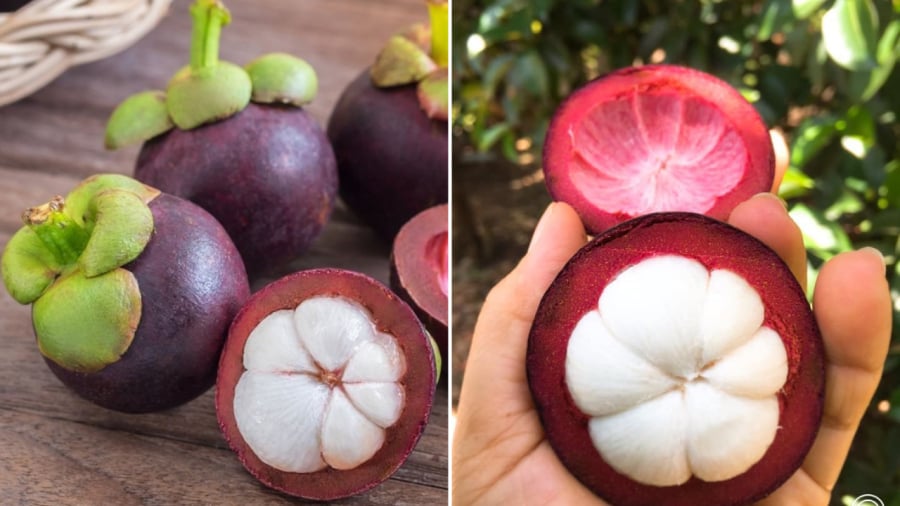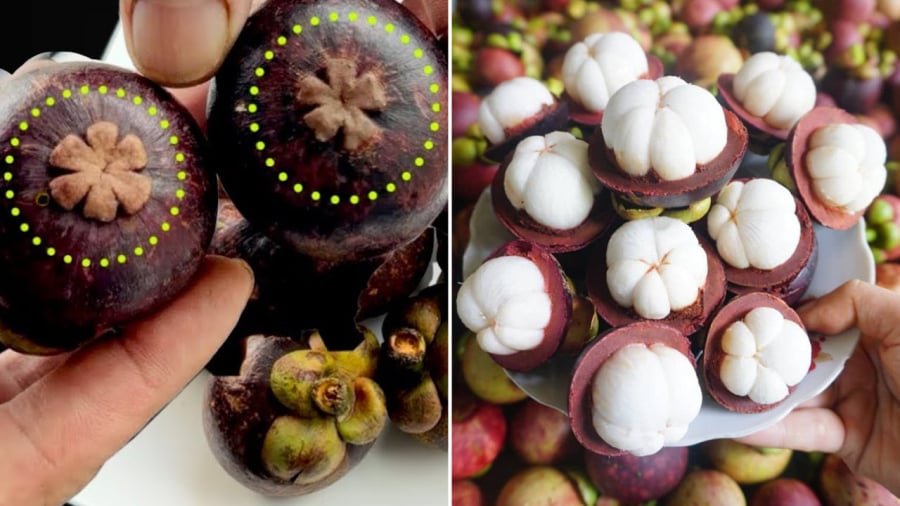Mangosteen delights the palate with its sweet and fragrant taste, subtly intertwined with a tangy twist. Its flesh, soft and juicy, has captivated the hearts of many, earning it the title of the “queen” of fruits. Beyond its delectable flavor, mangosteen boasts an impressive nutritional profile, offering a plethora of health benefits.
However, the thick-skinned fruit can be a challenge to select, leaving many unsure of how to choose the sweetest and most pulpy ones. To select the best mangosteen, keep an eye out for these distinctive traits.
Examining the Mangosteen’s Exterior
When shopping for mangosteen, gently press the outer shell of the fruit with your thumb. Avoid those with overly hard shells, as they may indicate a lack of juiciness. Instead, opt for fruits with a slight give and bounce, signaling perfect ripeness and sweetness.
Pay attention to the stem of the fruit. A dark-colored stem often signifies a drier fruit, while a green stem indicates a freshly picked mangosteen, promising juicier and more flavorful segments.
Additionally, take a look at the calyx, the small green cap-like structure at the base of the fruit. A fresh, vibrant green calyx indicates a recently harvested mangosteen, ensuring a more delicious taste experience. Steer clear of fruits with calyxes that have turned yellow-brown and appear wilted, as these have likely been sitting on the shelf for a while.
In terms of color, deep purple mangosteens are the ones to go for. This hue indicates ripeness, sweetness, and a burst of juicy goodness. On the other hand, bright purple-red mangosteens tend to be on the tart side.

Should You Go for Mangosteen with Yellow Sap?
You may notice some mangosteens with a hint of yellow sap on their shells. This sap is the tree’s natural resin, exuded during the harvesting process. Only freshly picked mangosteens will exhibit this trait, so feel free to choose these for a tasty treat, considering the other indicators mentioned above.
However, if you come across fruits with yellow-green or yellow-brown liquid and an off-putting sour or foul odor, it’s best to give them a pass, as these are signs of spoilage.
Selecting Mangosteen with Plentiful Segments
To determine the number of segments within a mangosteen, examine the base of the fruit, where you’ll find a flower calyx. The more petals this calyx has, the more segments the fruit contains. Each petal corresponds to a segment, so use this as a guide when making your selection.

While some shoppers prefer mangosteen with larger segments, it’s worth noting that bigger segments often mean larger seeds, reducing the amount of edible fruit. So, don’t be afraid to go for the fruits with slightly smaller segments to get the most bang for your buck.
With these tips in mind, you’re now equipped to select the freshest and most delectable mangosteen. Happy shopping and indulging!






























